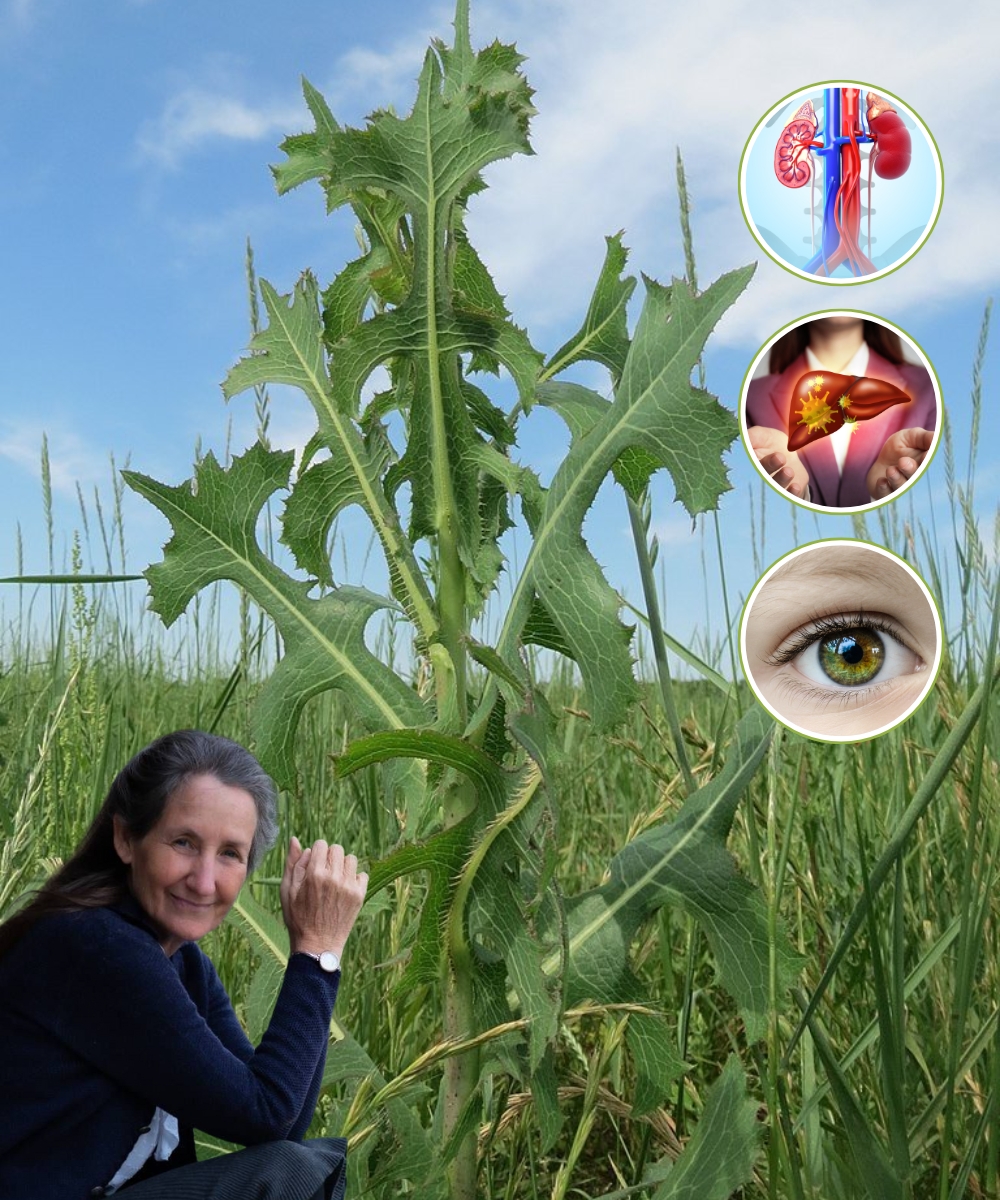ADVERTISEMENT
### **How to Harvest and Use Prickly Lettuce**
Although prickly lettuce is found in many areas worldwide, knowing how to properly harvest and use this plant is essential for making the most of its benefits.
#### **1. Harvesting Prickly Lettuce**
Prickly lettuce is best harvested during its growing season in late spring or early summer when the plant is still young. The leaves should be picked early in the day when they are fresh and full of their medicinal compounds. The stems and sap of the plant are also valuable, as they contain lactucopicrin, which provides many of the plant’s sedative and pain-relieving effects.
When harvesting, be sure to wear gloves, as the plant’s leaves and stems can be quite prickly. It’s also important to ensure you are harvesting from a clean, non-contaminated area, away from pollutants, pesticides, or other chemicals.
#### **2. Preparing Prickly Lettuce**
Once harvested, prickly lettuce can be used fresh or dried. To prepare the leaves for use, they can be dried and then steeped into a tea, or the leaves can be made into a tincture by soaking them in alcohol for several weeks. The sap of the plant, which is often referred to as “wild lettuce opium,” can be carefully collected and used for pain relief or as a sleep aid. However, this should be done with caution, as the sap is potent.
For those not interested in harvesting and preparing prickly lettuce themselves, there are also commercial tinctures, capsules, and teas available that contain the active ingredients from the plant.
#### **3. Dosage and Precautions**
As with any herbal remedy, it’s important to use prickly lettuce in moderation. While it is generally safe for most people, large doses or long-term use may cause side effects, such as drowsiness, dizziness, or nausea. It is also not recommended for pregnant or breastfeeding women without consulting a healthcare provider.
For those looking to use prickly lettuce for sleep, a small amount of tea or tincture is usually sufficient. For pain relief or anti-inflammatory purposes, a higher dose may be necessary, but it’s always best to start with a small amount and increase gradually.
—
### **Conclusion: Embracing the Hidden Power of Prickly Lettuce**
Prickly lettuce may be an unassuming plant that grows in fields, roadsides, and gardens, but its medicinal potential is far-reaching. From its sedative effects to its anti-inflammatory and digestive benefits, *Lactuca serriola* is a plant that offers a natural remedy for a variety of ailments.
Incorporating prickly lettuce into your health regimen, whether through teas, tinctures, or topical applications, can provide a natural, gentle alternative to many conventional treatments. Its history of use in traditional medicine speaks to its lasting power and efficacy, and modern research is beginning to confirm many of the benefits that have been passed down through generations.
So, the next time you come across prickly lettuce growing in your yard or in a field, take a moment to recognize the power of this unpretentious plant. With proper harvesting and preparation, it could become a valuable addition to your herbal medicine cabinet, offering natural support for your overall well-being. Whether you’re seeking relief from anxiety, pain, or digestive discomfort, prickly lettuce may be just the remedy you’ve been searching for.
